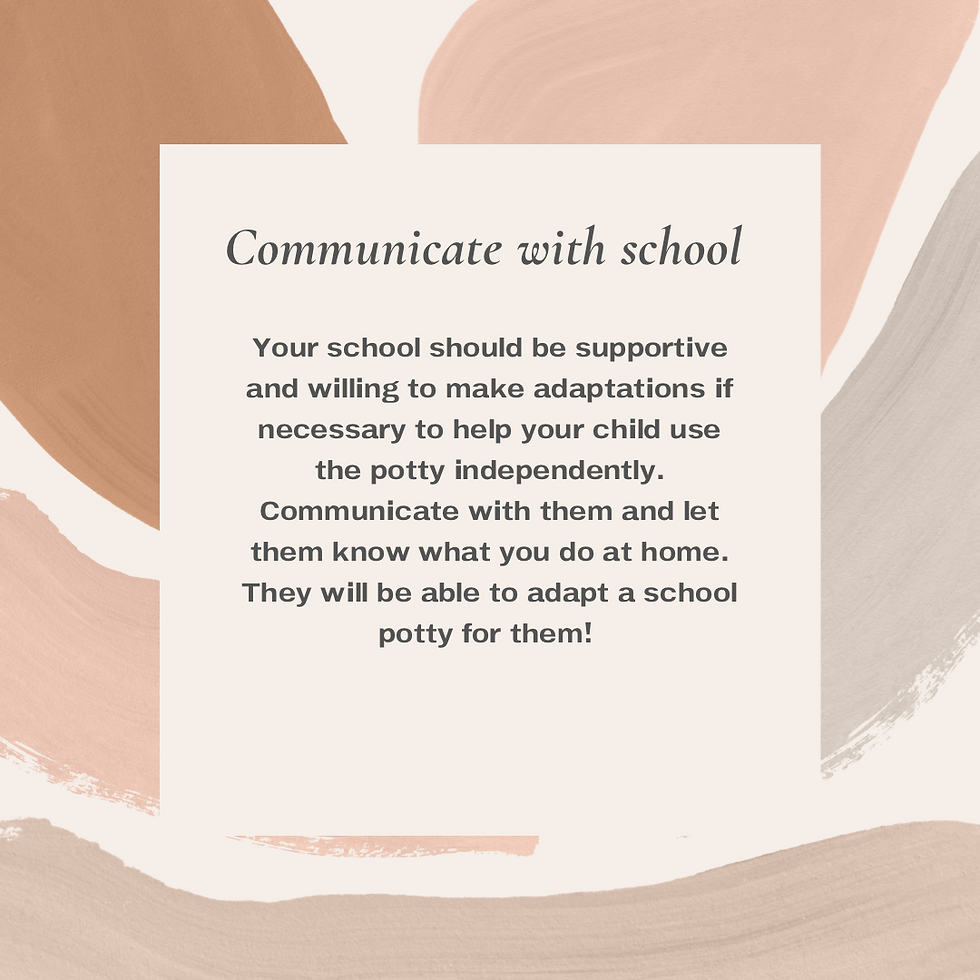Potty Tips and Adaptations for Kids with Physical Challenges
- Dr. Emily Stefan, PT, DPT

- Jun 26, 2022
- 3 min read

Potty training with toddlers is difficult, but potty training those who have physical challenges seems like uncharted territory. You realize quickly that getting on and off of the toilet is quite the challenge for your toddler, and I am here to help! There are several common issues that arise, such as coordination of getting onto the potty and balancing to get on and stay on the potty. I hope that these tips help your child become more independent and confident on the potty!
*Disclosure: I only recommend products I would use myself and all opinions expressed here are my own. This post may contain affiliate links that at no additional cost to you, I may earn a small commission.
1. Use a Toddler Training Potty If Possible

Sometimes the easiest way to start potty training is by using a toddler potty. With a toddler potty, your child does not have to climb up to a big potty and feel like they are falling inside of it when they sit down. Most toddler potties are similar in terms of physical ability to get on and off, but I will share my follower-approved toddler potty below! If a toddler potty does not work for your family or is not supportive enough for you child, move on to tip #2!
I like this potty a lot because of the higher back, which provides more trunk support than other potties.
Tips 2 and 3- Use a Seat Insert and Step Stool

So a toddler potty no longer works for your family. Or your toddler wants to use the big girl/boy potty. Or say your kid is going to school and all they have is big potties. Try these tips! But remember- every child is a little bit different and what works for one family may not work for another. These tips have been trialed by a specific toddler who struggles with coordination, high tone, and balance. These tips may at least be a good starting point for you!
A toddler seat insert installed onto a big potty- this helps your child feel as if they are secure and not falling through the toilet seat. This will give them a better base of support and improve balance while sitting on the toilet.
A step stool with tall railings- this is important and has many benefits. First and foremost, the steps and railing helps your toddler get up to the toilet independently. Secondly, it helps with the coordination of turning around once it‘s time to sit down- they can move their hands on the railing and use them for balance as they turn and sit. Third, once your child sits, they have foot support which further enhances balance and security. This specific step stool is a tried and true, and it even has non slip pads on the bottom for added security.
4. Keep in Mind What Your Toddler is Wearing

A big part of independence with pottying is dressing and undressing. Anything with zippers and snaps may be more difficult to navigate independently (if you use zippers, these may be helpful to attach if your child has trouble). Velcro and stretchy waistbands are great to promote independence. Tight pants and jeggings may be more difficult to pull down and up than shorts or looser jeans. You can always size up if necessary! Although we want to promote independence, it’s also important to teach our children to ask for help if they truly need it!
Communication with School or Daycare

If your child is in school or daycare, communicate with them what works for you at home. Chances are, they are probably helping them go to the bathroom. If you are promoting independence, have your school apply the same tips that you use at home. They should be willing to make adaptations and buy the same equipment if necessary.
Do you have a child that is working on independence with bathroom trips? Any advice to share with other caregivers? Send it my way and I wills hare with others!







Comments